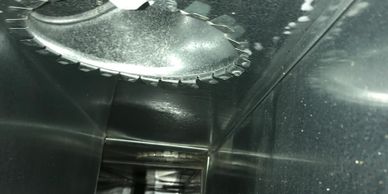Indoor air quality (IAQ) refers to the quality of the air inside buildings, including homes, offices, schools, and other indoor environments. Poor IAQ can have negative impacts on human health, such as respiratory problems, allergies, and headaches. In this term paper, we will discuss the factors that affect IAQ, the health effects of poor IAQ, and the measures that can be taken to improve IAQ.
Factors affecting IAQ:
1. Poor ventilation: Inadequate ventilation can lead to the accumulation of pollutants, such as carbon dioxide, volatile organic compounds (VOCs), and particulate matter, which can have negative health effects.
2. Indoor pollutants: Sources of indoor pollutants include building materials, cleaning products, pesticides, and tobacco smoke. These pollutants can accumulate in indoor environments and contribute to poor IAQ.
3. Moisture: High levels of moisture can lead to the growth of mold and mildew, which can release spores and other allergens into the air.
4. Outdoor pollutants: Outdoor pollutants, such as vehicle exhaust, can enter indoor environments through ventilation systems or open windows.
Health effects of poor IAQ:
1. Respiratory problems: Exposure to indoor pollutants has been linked to respiratory problems, such as asthma and chronic obstructive pulmonary disease (COPD).
2. Allergies: Indoor pollutants can exacerbate allergies and cause symptoms such as sneezing, runny nose, and itchy eyes.
3. Headaches: Poor IAQ can also cause headaches, dizziness, and fatigue.
4. Long-term health effects: Exposure to certain indoor pollutants, such as radon, can increase the risk of long-term health effects, such as lung cancer.
Measures to improve IAQ:
1. Proper ventilation: Proper ventilation can help to reduce the concentration of indoor pollutants, and maintain healthy levels of carbon dioxide and humidity.
2. Source control: Identifying and eliminating sources of indoor pollutants, such as using non-toxic cleaning products, can help to reduce their concentration in indoor environments.
3. Air purification: Air purification systems, such as air filters and air purifiers, can help to remove pollutants from indoor air.
4. Humidity control: Maintaining healthy levels of humidity can help to prevent the growth of mold and mildew.
5. Regular cleaning and maintenance: Regular cleaning and maintenance of HVAC systems, including air ducts and filters, can help to prevent the accumulation of pollutants in indoor environments.
In conclusion, indoor air quality is an important factor in maintaining a healthy lifestyle.





